Photovoltaic (PV) Systems
Below there are sections on:
- What is A Photovoltaic (PV) System?
- How Does it Work?
- How Much Current Can PV Systems Produce?
- Are There Different Types of Solar Modules?
- Do PV Systems Have To Look Like Panels Stuck on A Roof?
Click here to visit online store.
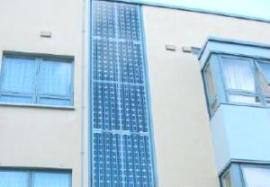
What is A PV System?
This is a system that converts light directly from the sun into electricity without creating any air or water pollution. The word 'photovoltaic' is a combination of two terms, "photo" meaning light and "voltaic" meaning or referring to voltage.
The cells that converts light to electricity are sealed in modules that are then placed in an array to form what you will know as 'solar panels'.
These systems can be 'grid connected' meaning that your home is still connected to the national power grid enabling the system to be topped up with power from the grid if need be, or if the PV system has produced more power than you need you could sell the excess power back to that utility provider.
Stand alone systems (or 'off grid') are installed in homes that are not connected to a power grid.
Note: If you are grid connected and have excess power and want to sell it back to the utility provider (called net-metering), they generally pay you at a lower rate than what they charge you.
Create your own electricity
with Biofuel
Click Here!
How Does it Work?
Photovoltaic (PV) cells are generally made of at least two layers of semi-conductors, one with a positive charge and the other with a negative charge. When the light from the sun enters the photovoltaic cells some of the photons from that light get absorbed by atoms in the semi-conductors.
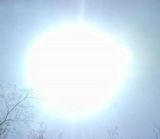
This process frees the electrons from the cells in the negative layer causing them to flow through an external circuit and then back into the positive layer and it's the flow of these electrons that produces an electrical current.
The current produced by a photovoltaic cell is 'direct current' (DC) which is then converted through a DC-AC inverter into 'alternating current' (AC) for use in your home at the time or direct as DC to (batteries) for use later (usually stand-alone systems).

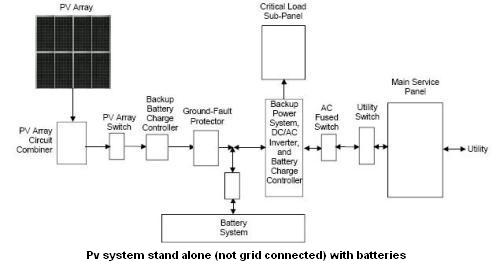
The above schematic shows both grid connection and battery stand alone PV systems
How Much Current Can PV Systems Produce?
The level of 'current' and similarly the level of 'voltage' in PV systems is dependent on how the modules are wired together. There are two ways of wiring modules, in 'series' and in 'parallel'.
For example when two modules are wired together in 'series' the voltage for the two is doubled but the current stays constant, and when two modules are wired in 'parallel' the current for the two is doubled and the voltage stays constant.
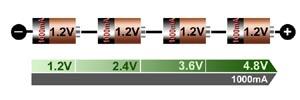 serial connection
serial connection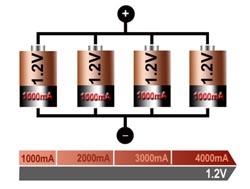 parallel connection
parallel connectionUsing this combination gives you and the PV designer the flexibility to create a solar module photovoltaic system to meet your electrical needs.
Note: Having low energy rated appliances in your home with these systems will reduce energy consumption so further reducing your costs.
Are There Different Types of Solar Modules?
Yes, there are two distinct solar module categories:
- Crystalline silicon
- Amorphous silicon thin film
Both can be used in grid connected and stand alone installations.
Mono and poly crystalline modules are usually wired in series therefore providing an output that is suitable for charging batteries.
Note: The efficiency of crystalline module arrays decreases in temperatures above 25ᵒC by approximately 0.5ᵒC so they need to be cool. The energy conversion process in PV systems is from the 'light' and not 'heat' of the sun, so ideally these modules should be installed where possible in positions where they may receive some cool breeze.
Do PV Systems Have To Look Like Panels Stuck on A Roof?
No, not at all. Apart from the common solar panels that you may already be familiar with, solar modules are currently being fabricated as building materials such as:
- Wall materials
- Solar roof tile
- Semi-transparent roof materials for atriums
- Semi-transparent roof materials for skylights
See also:
Click here to visit online store.
Home Heat Loss Heat Gain Radiant Heat Central Heating Radiators UFH Terms of Use | Privacy | Contact Us
Heat Pumps GSHP's WSHP's ASHP's Solar Heating PV Systems Boilers
Water Heaters Insulation Elec-Heaters

|
Visitors Say
Hi, My name is Shannon and I'm one of home-heating-systems-and-solutions.com readers. I'd like to thank you for the excellent information I've found on home-heating-systems-and-solutions.com, it's one of my favorite readings on the net. Warmest Regards Shannon United States
Thanks for the advice for removing an air lock from an indirect system. Had to change an inlet on my cistern. First time I have tried any home plumbing. After draining the cold tank system air locked when I refilled the tank. Garden hose and mains pressure up the tap sorted my problems. Would not have known what to do without the advice on the site. Many thanks Sean United Kingdom.
An excellent site. I have found it very usefull. I am currently in the design phase of a new house and have be pondering which heat system to use. From your site I have been able to choose the right system. Ross New Zealand
I enjoyed your site. Pat United States
We're so excited to announce our first Children Book
The Special and Talented Dog Show
To order click here
The second book published is called
Flying Things
This is aimed at a pre-school audience and is a rhyming story. You can buy by clicking here
To read more about our children's books, click here



